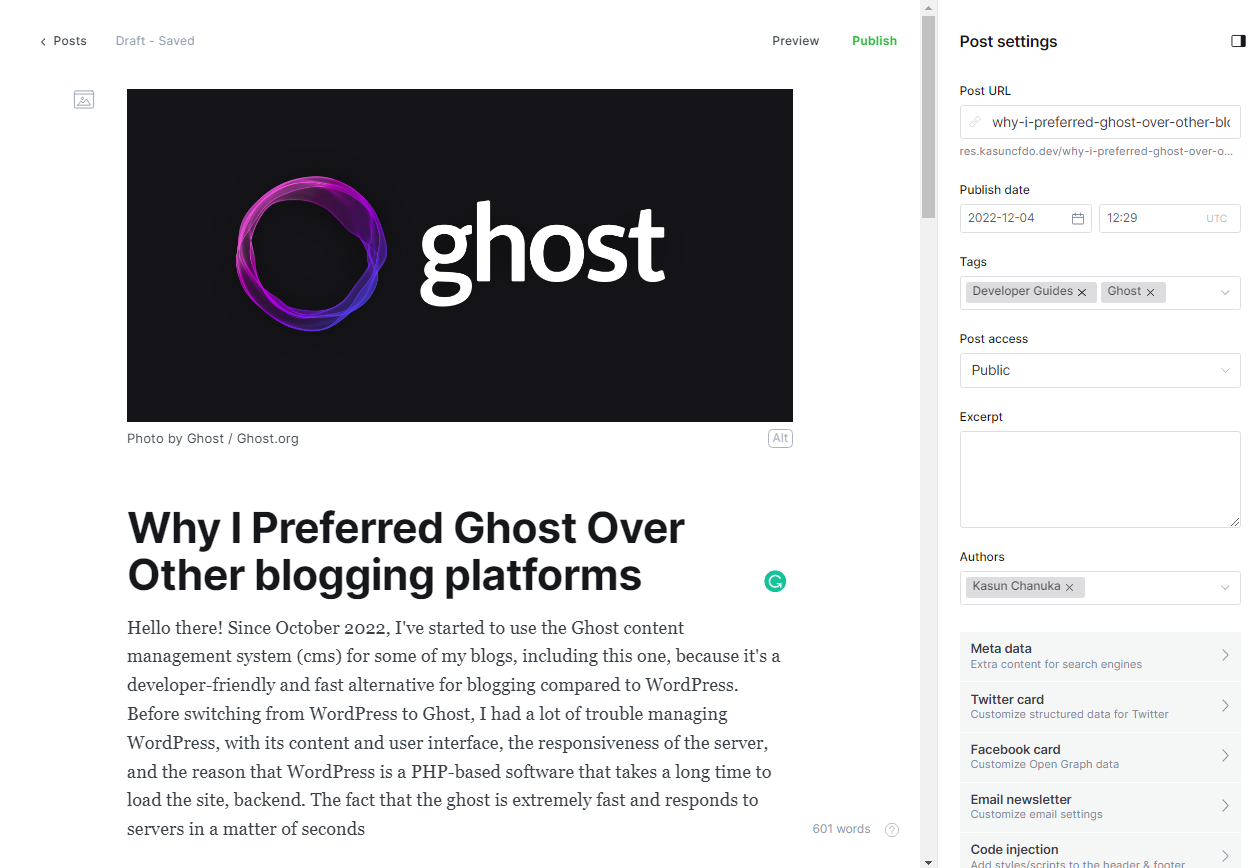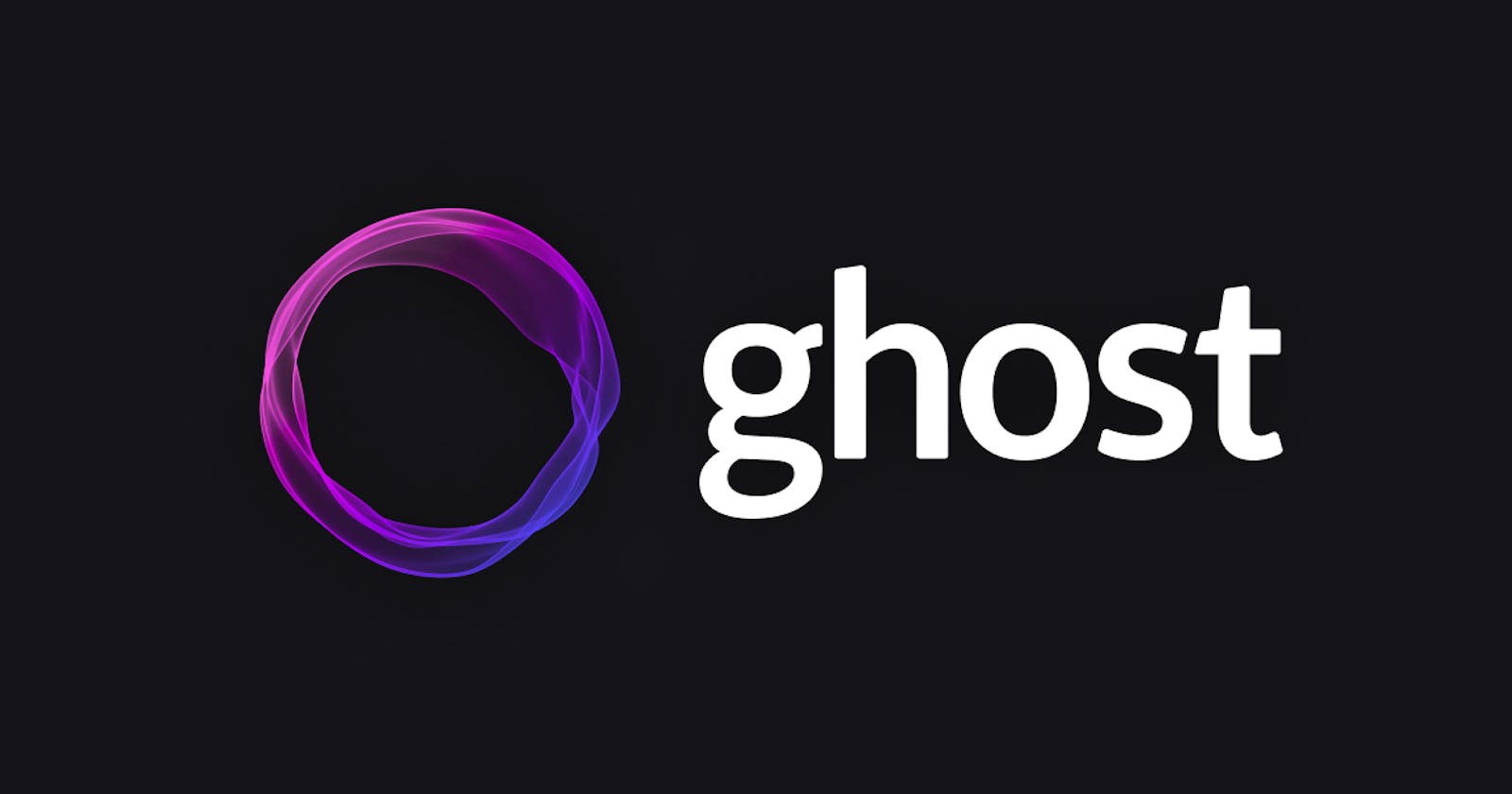Hello there! Since October 2022, I've started to use the Ghost content management system (cms) for some of my blogs, because it's a developer-friendly and fast alternative for blogging compared to WordPress. Before switching from WordPress to Ghost, I had a lot of trouble managing WordPress, with its content and user interface, the responsiveness of the server, and the reason that WordPress is a PHP-based software that takes a long time to load the site, backend. The fact that ghost is extremely fast and responds to servers in a matter of seconds.
Today I am going to share my experience with a CMS platform that was created only for blogging. It is called Ghost, and Ghost is a widely used CMS platform all over the world. For example, companies and businesses like Buffer, OpenAI, Mozilla, and Ulessys have used Ghost CMS to develop their blogs.
Recently, the #Ghost blogging platform, aka Ghost CMS, has been the future of blogging compared to WordPress. Ghost is a powerful app for new media creators to publish, share, and grow a business around their content. It comes with modern tools to build a website, publish content, send newsletters, and offer paid subscriptions to its members. Ghost is a perfect fit if you are also familiar with development!
The Ghost Ecosystem
Before considering the switch to Ghost, you might become familiar with the Ghost ecosystem. The term "ecosystem" refers to all of the parties involved in Ghost. From the Ghost core developer to consumers, third-party developers, and Ghost-related services (web hosting, theme development service, etc.),
Although Ghost is open-source software, its ecosystem is limited in that third-party developers are not permitted to create plugins to increase Ghost's capabilities and features. Third-party developers can only participate by creating a theme.
Third-party developers can create a Ghost-specific product (apart from themes), but it cannot be deployed as a plugin and run as an important component of Ghost. Instead, the product should be run as a distinct service.
Some useful websites related to Ghost:
Ghost Forum: To get help with technical issues
ThemeForest: For premium Ghost themes
Features of Ghost
Built-in Key Features
It’s true that Ghost doesn’t allow you to add a plugin to extend the functionality as well as the feature of your blog, but it already has useful features you need for blogging. There are two notable, useful built-in features you can get from Ghost:
Native SEO
Newsletter and Membership
SEO
SEO is the marketing pillar of any online business type, including blogs. SEO is the best marketing channel to acquire organic traffic.
Ghost has some built-in features you can maximize to make your blog posts on the front page of search engines. You can set the custom meta title and the custom meta description of your blog posts. Also, Ghost allows you to set custom titles and descriptions for Twitter and Facebook.

In addition, Ghost also has a built-in sitemap (which you can access by typing yourblog.com/sitemap.xml on the web browser). You can also set a custom URL for a blog post to make it more SEO friendly.
Here are some SEO features offered by Ghost:
Custom meta title and description
Custom URL
Custom social media title and description
Built-in sitemaps
Google AMP pages
Canonical tags
Membership and Newsletter
Ghost is developed with a main grand mission to help indie publishers to earn better revenue streams via recurring payments. Pretty similar to SaaS, but you offer content instead of service.
To make it easier for you to offer paid content, Ghost has a built-in membership feature whereby the members are divided into two groups: free members and paid members. When publishing a blog post, you can set which user group can access it.

Regarding the payment, you can integrate Ghost blog with Stripe to handle the payment.
What is Stripe?
Stripe is a payment gateway service that bridges a customer and a merchant (you in this context). Stripe will handle the membership payments on your blog. Stripe allows your members to make payments via credit card/debit card.
As long as you live in a country supported by Stripe, the integration process between Stripe and Ghost is not too complicated. You can visit this page to figure out the list of countries already supported by Stripe.
Ghost has a dedicated menu for managing your members. If you have some email subscribers on services like MailChimp and ActiveCampaign, you can bring them to Ghost by importing them.
Ghost has a component called Portal. It is a component to control the pages — including the registration form — related to membership.

Once you have enough members on your blog, you can send them email newsletters on a regular basis. Sending email newsletters in Ghost is extremely straightforward. When writing a new blog post, you have two publication options: publish it as a regular blog post and send it as an email newsletter. There is also a scheduling feature in case you want to deliver the blog post at a specific time.
Ghost CMS Performance
Ghost uses a cutting-edge modern tech stack to provide the best user experience at no cost. I've included below the current performance of my ghost website which used the default customized Casper theme.

Who Is Ghost For?
Ghost is a platform that I highly recommend to anyone who is just starting their blogging career and seeking for a way to share their contents with their own audience or community. Ghost, in particular, is not only for you; it is also for writers, journalists, entrepreneurs, content marketers, newsletters, authors, podcasters, video makers, marketers, creators, and publishers.
Ghost is a contemporary, straightforward blogging platform designed primarily for professional publication. John O'Nolan, the project's founder, is on a mission to help indie publishers (bloggers, writers, indie publishing businesses, and so on) increase their revenue streams through recurring payments. Ghost is developed with a built-in membership function that allows you to restrict access to your content to paying members exclusively. Also, Ghost features native payment gateway integration with Stripe.
My experience with the ghost
I had a wonderful experience with the ghost, literally from 0 to today. Without a doubt, it's incredibly organized and user-friendly from the backend to the default post/page editor, which is the feature I adore the most.

Would you love to learn or start development with the ghost?
Also, they have been providing well-written development guides and resources to make your ghost journey more enjoyable.

For more informations about this, you can use the bettertechtips.com website.written wih love by @kasuncfdo
